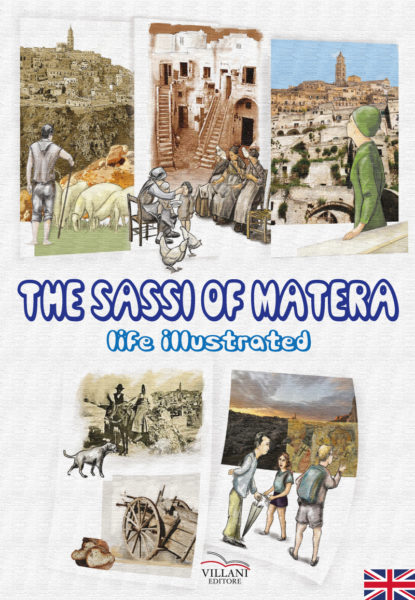Matera is not a beautiful city, using the standard definition of this adjective. In fact it does not follow the aesthetic standards that normally characterise art heritage cities. Carlo Levi’s sister, Luisa Levi, a doctor who having arrived to Matera in a warm September of 1935, was right when she defined it as a “striking” city – that is to say, tragic. […]
The Sassi… do exist because there was someone who dug them, lived in them and preserved them for us to reflect upon, way before we started contemplating them. All things considered, this goes to signify that the Sassi were not rocks but men – or “heroes” in a certain sense – who turned their city into a “peasant capital” over the previous centuries, a “UNESCO World Heritage Site” in 1993, and the “Capital of European Culture” in 2019.
| Prezzo: | €12.00 |
| SKU: | 9788898200252 |
Recensioni
PREFACE
Matera is not a beautiful city, as we are commonly accustomed to using this adjective. In fact it does not follow the aesthetic standards that normally characterise art heritage cities. Quite on the contrary, Carlo Levi’s sister, Luisa Levi, a doctor who after having arrived in Matera in a warm September of 1935, was right when she defined it as a “striking” city – that is to say, tragic. It was only afterwards that architects and town planners would focus all their attention on “what the Sassi seemed like”, forcing themselves to capture and observe details, marquetry, chimneypots, balconies. What made them stop and contemplate for a long time was analysing and describing how the limestone-dwellings were settled, until they ultimately came to see them as being purely a result of nature, and free of man’s deliberate creation. The fact is that all available sociological and anthropological studies on Matera date well back to the mid-1940s and 1950s. This means that since the issue of the redevelopment and recovery of Matera has been raised, no one has taken the trouble to enter the caves, to feel and to relive the breathing, the sufferings, the diseases, the cold, and the darkness which had all led the Sassi dwellers to press against each other and to stay warm by using both their own and the animals’ breath. The image that we have today of the Sassi professes aestheticism and beauty, and is therefore often misleading.
For centuries, from the above and affluent “Piano”, that world had been looked upon with suspicion and almost with disgrace, to the point where they had even forbid themselves and their children to descend to the “underworld”. Surprisingly, they had needed to rid themselves of the Sassi dwellers so that the city “above” could suddenly understand and come to regret just how empty the Sassi became, and therefore feel the need for them to be occupied once again. But by then everyone’s attention was entirely focused on the walls, the limestone and on how it would be possible to commercialize it all. It is no wonder that today tourists are greatly astonished as they seek the Sassi to be stones set in a rocky landscape while they gaze at the restored limestone façades.
Franco Villani, editor and friend, and who was by no means fooled by appearances, asked me one day to go along with him to the Sassi: to go along its steep, disconnected and slippery cliffs together until we would finally reach the threshold of the caves. He did not want to use words. As he decided to team up with Franco Carella, a painter and illustrator with a fast-moving hand, he wanted Matera’s story to be told in a different way, something that had already been done for his native town of Calvello. He wanted to “make” a film, but not the kind of film like we are used to watching. He wanted to use the Sassi landscape as a setting and turn it into a show. He wanted to illustrate its men and their lives. He wanted to create a cartoon-like “film”. So Franco Carella devoted himself to drawing a series of sequences which narrate the history and the life stories that had taken place in the Sassi until its slum clearance law came into effect, soon afterwards becoming an evacuation law.
In order to carry out such a daunting task, what was needed was the pencil of an able illustrator, whose talent would also be guided by his heart and his personal memories. What was also needed was the quick incisiveness of captions capable of supporting his illustrations. And that is exactly how it went. The “film”- not a cartoon history, not a book – was now complete. In it you can see the faces of the women, the peasants, the objects, and the corners that marked centuries of toil and hard work, births and deaths in the cold and darkness – all in a dramatic but also epic struggle to adjust oneself to the tufa surroundings. After all, the Sassi do exist because there was someone who dug them, lived in them and preserved them for us to reflect upon, way before we started contemplating them. All things considered, this goes to signify that the Sassi were not rocks but men – or “heroes” in a certain sense – who turned their city into a “peasant capital” over the previous centuries, a “UNESCO World Heritage Site” in 1993, and the “Capital of European Culture” in 2019.
Giovanni Caserta
INFORMAZIONI:
| Autori | Carella-Caserta-Villani |


